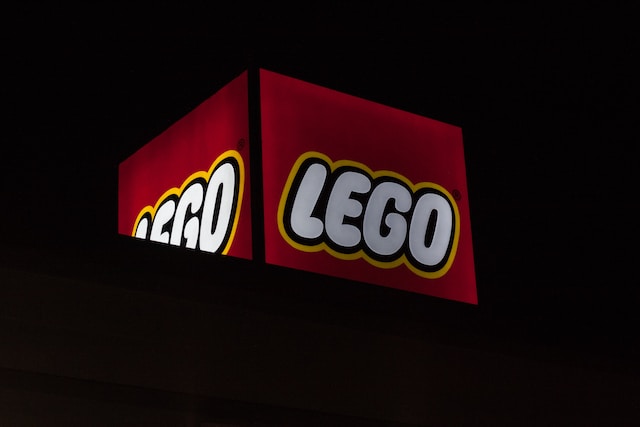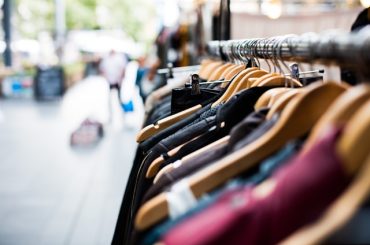Before we dive deep into the PESTEL analysis, let’s get the business overview of LEGO. The LEGO Group, founded in 1932, is a Danish family-owned company known for its globally popular plastic construction toys, LEGO bricks.
The company’s name is derived from the Danish words “leg godt,” meaning “play well.” Since its inception, LEGO has expanded its product range to include various themes and sets, catering to different age groups, interests, and skill levels.
Key Product Segments:
- LEGO System: These are the traditional LEGO bricks and sets featuring various themes such as LEGO City, LEGO Technic, LEGO Ninjago, LEGO Friends, and LEGO Star Wars. These sets cater to a wide range of age groups, from toddlers to adults.
- LEGO DUPLO: Designed for younger children aged 1.5 to 5, DUPLO sets are larger, more colorful, and easier to handle than traditional LEGO bricks. They help to develop creativity, fine motor skills, and problem-solving abilities in young children.
- LEGO Education: This division provides learning solutions for schools and educational institutions. LEGO Education products integrate STEAM (Science, Technology, Engineering, Arts, and Mathematics) concepts into engaging, hands-on learning experiences using LEGO bricks and digital tools.
- LEGO Architecture: This product line targets adult fans of LEGO and architecture enthusiasts. The sets replicate famous landmarks and buildings worldwide, such as the Eiffel Tower, the White House, and the Sydney Opera House.
- LEGO Ideas: This platform allows LEGO fans to submit designs for future LEGO sets. If a design receives enough support from the community, it may be produced and sold as an official LEGO set.
- Licensed Themes: LEGO collaborates with various intellectual properties (IPs) to create sets based on popular franchises such as Marvel, DC Comics, Disney, Harry Potter, and many more.
Other Business Areas:
- Digital Experiences: The LEGO Group offers various digital experiences like video games, mobile apps, and online platforms, which provide a complementary experience to their physical products.
- LEGO Stores: The company operates LEGO-branded retail stores worldwide, offering a unique shopping experience, exclusive sets, and engaging in-store activities.
- LEGOLAND: Owned by Merlin Entertainments, LEGOLAND is a chain of family-friendly theme parks and resorts centered around the LEGO brand. These parks feature rides, attractions, and life-sized LEGO models for visitors to enjoy.
- Media and Content: LEGO produces animated movies, TV shows, and web content based on their popular themes, further expanding its brand reach and creating a broader entertainment ecosystem.
Financial Performance 2022: LEGO’s revenue grew 17 percent to DKK 64.6 billion ($9.33 billion), and Operating profit grew 5 percent to DKK 17.9 billion ($2.58 billion).
Here is the PESTEL analysis of LEGO
A PESTEL analysis is a strategic management framework used to examine the external macro-environmental factors that can impact an organization or industry. The acronym PESTEL stands for:
- Political factors: Relate to government policies, regulations, political stability, and other political forces that may impact the business environment.
- Economic factors: Deal with economic conditions and trends affecting an organization’s operations, profitability, and growth.
- Sociocultural factors: Relate to social and cultural aspects that may influence consumer preferences, lifestyles, demographics, and market trends.
- Technological factors: Deal with developing and applying new technologies, innovations, and trends that can impact an industry or organization.
- Environmental factors: Relate to ecological and environmental concerns that may affect an organization’s operations and decision-making.
- Legal factors: Refer to the laws and regulations that govern businesses and industries.
In this article, we will do a PESTEL Analysis of LEGO.
PESTEL Analysis Framework: Explained with Examples
Political
- Trade Regulations: LEGO operates in various countries. Hence, any changes in trade regulations, tariffs, or trade wars can directly impact LEGO’s cost of operations and profitability. For instance, if tariffs are imposed on plastic imports in a particular country, the cost of producing LEGO bricks might increase.
- Political Stability: LEGO needs a stable political environment for its manufacturing units and markets. Political unrest or frequent policy changes in countries where they operate can disrupt their supply chain or reduce consumer demand.
- Product Regulations: Regulations related to product safety, especially toys for children, are critical for LEGO. Countries might have different safety standards, and adhering to them is crucial to maintain trust and avoid legal issues.
- Intellectual Property Rights: Political decisions related to intellectual property rights in various countries can affect LEGO. Strong IP protection is crucial because counterfeiting and imitation are concerns for brands like LEGO.
- Taxation Policies: Changes in corporate taxation policies or the introduction of new taxes can influence LEGO’s profitability. For instance, if a country where LEGO has a significant market introduces a higher sales tax on toys, it might impact sales.
- Child Labor and Production Ethics: As a children’s toy manufacturer, LEGO is particularly sensitive to issues around child labor. Political stances and regulations around child labor in countries where LEGO sources its materials or manufactures its products can affect its operations and brand image.
- Government Initiatives: Sometimes, governments initiate programs to boost local manufacturing or promote specific industries. LEGO could benefit if any such initiative supports the toy industry or related sectors.
Economic
- Economic Growth: The overall economic health of the countries where LEGO operates can significantly affect its sales. In booming economies, consumers have more disposable income and are likelier to spend on non-essential items like toys. Conversely, toy purchases might decline during recessions as consumers tighten their belts.
- Exchange Rates: LEGO operates internationally, meaning currency exchange rate fluctuations can impact its costs and revenues. For instance, if the Danish krone (LEGO’s home currency) strengthens significantly against other major currencies, LEGO’s products could become more expensive for international consumers.
- Interest Rates: Interest rates influence the cost of borrowing. Higher interest rates can increase costs if LEGO needs to finance expansions or other projects through borrowed capital. Furthermore, changes in interest rates influence consumer spending habits; higher rates discourage purchases on credit.
- Inflation Rates: Inflation can increase costs for raw materials, labor, and other expenses. If these costs rise faster than LEGO can increase its prices, it can squeeze the company’s profit margins.
- Employment Levels: High employment levels generally mean more disposable income in the hands of consumers, which can lead to increased sales for LEGO. Conversely, high unemployment can mean a decrease in sales.
- Availability and Cost of Raw Materials: Economic factors can influence the availability and price of raw materials, such as the petroleum-based products used to make LEGO bricks. If the global economy faces a crisis affecting oil production, LEGO’s production costs could rise.
- E-commerce and Retail Trends: Economic trends can shift the balance between brick-and-mortar retail and e-commerce. For instance, some consumers prefer online shopping during economic downturns to find better deals, affecting LEGO’s retail partnerships and sales strategies.
Sociocultural
- Changing Family Dynamics: The traditional family structure in many countries is evolving. Spending patterns on toys and games might change with more single-parent households or families with fewer children.
- Shifts in Play Preferences: With the rise of digital technology, children are increasingly attracted to video games, mobile apps, and online entertainment. LEGO has been mindful of this and has integrated technology into some of its products, like the LEGO video games and LEGO Boost.
- Cultural Significance: LEGO is a toy and a tool for creativity. LEGO can be seen as more than just a child’s plaything in cultures that value creativity and hands-on learning. The LEGO brick is iconic in many cultures, but understanding regional differences is vital.
- Gender Norms: Over the past years, there’s been a move towards breaking gender stereotypes. LEGO has received both praise and criticism in this regard, especially concerning sets that seem gendered. The brand has been working on being more inclusive and breaking away from traditional gender norms.
- Collaborations and Pop Culture: LEGO’s collaborations with popular movies, TV shows, and characters (like Star Wars, Harry Potter, and Marvel superheroes) tap into cultural trends, ensuring their product lineup remains relevant and appealing.
- Social Connectivity: The rise of social media and online communities means that fans of LEGO (both young and old) can connect and share their creations worldwide. This has given rise to phenomena like LEGO Ideas, where fans can suggest and vote on new set ideas.
- Generational Nostalgia: Many adults fondly remember playing with LEGO bricks as children. This nostalgic value can influence purchasing decisions for themselves (the AFOL community – Adult Fans of LEGO) or their children.
- Globalization vs. Localization: While globalization brings a certain homogeneity in consumer preferences, local cultural nuances remain significant. LEGO must balance its global product range with localized sets to cater to specific cultural preferences or events.
Technological
- Digital Play Integration: With the rise of digital technology, there’s been a shift towards electronic games and apps. LEGO has tapped into this trend with offerings like the LEGO video games series, LEGO BOOST (which integrates coding), and augmented reality sets.
- Manufacturing Technologies: Advancements in manufacturing can lead to more efficient, precise, and sustainable production methods. Precision in manufacturing is crucial for a product like LEGO, which relies on the perfect fit of bricks.
- 3D Printing: With the rise of 3D printing, there’s potential for consumers to design and print their own customized LEGO-like bricks or components. This technology poses both challenges (in terms of intellectual property) and opportunities (for personalized products) for LEGO.
- E-commerce and Online Retail: Technological advancements in online shopping platforms, logistics, and digital payment methods have reshaped the retail landscape. LEGO has had to adapt its sales strategies, investing in its own e-commerce platforms and ensuring it’s present on major online retail platforms.
- Augmented Reality (AR) and Virtual Reality (VR): Technologies like AR and VR can offer immersive experiences. LEGO has dabbled in AR with sets that interact with mobile apps to bring the physical sets to life in new ways.
- Interactive Learning Tools: As technology integrates more into education, there are opportunities for LEGO to enhance its educational product range, like LEGO Education and Mindstorms, by incorporating more interactive, tech-driven learning tools.
- Robotics and Automation: LEGO sets, especially in the Mindstorms range, offer introductions to robotics. The evolution of robotics technology can provide new features and capabilities for these sets.
Environmental
- Sustainable Materials: LEGO has committed to transitioning from petroleum-based plastics to more sustainable materials. The company has been investing in research to find sustainable alternatives for its bricks that still maintain the quality and durability the brand is known for.
- Manufacturing Emissions: Large-scale manufacturing is energy-intensive. Environmental regulations and public scrutiny mean that LEGO is motivated to reduce carbon emissions from its factories, possibly by utilizing renewable energy sources or more efficient production techniques.
- Waste Management: Plastic waste is a significant environmental issue. LEGO, as a producer of plastic products, faces challenges and opportunities in ensuring that its products and packaging are designed with end-of-life and recyclability in mind.
- Packaging: There’s a growing push for businesses to reduce unnecessary packaging or transition to eco-friendly packaging options. LEGO has been exploring ways to minimize and innovate its packaging to lessen its environmental footprint.
- Supply Chain: LEGO’s supply chain has various environmental implications, from sourcing raw materials to delivering finished products. Optimizing transportation, ensuring sustainable sourcing, and collaborating with environmentally conscious partners are crucial aspects for LEGO.
- Product Longevity: One of LEGO’s environmental strengths is the durability and longevity of its bricks. A LEGO set from decades ago can still interlock perfectly with one made today. This longevity contrasts with many products in the consumer market that have a short lifespan and end up as waste.
- Water Use: Like many manufacturing processes, LEGO’s production might use significant amounts of water. Efficient water use and reducing water waste is another environmental aspect the company needs to consider.
- Biodiversity: Any expansion of manufacturing facilities or extraction of raw materials can impact local ecosystems. LEGO would need to consider the biodiversity implications of its business operations.
Legal
- Intellectual Property (IP) Rights: LEGO bricks have a unique design and are protected by IP rights. The company must continuously monitor and defend its patents, trademarks, and copyrights against counterfeiters and knock-off brands.
- Product Safety Standards: As a toy manufacturer, LEGO must ensure that its products meet the safety standards of every country it sells in. This relates to the materials used, the design of the product, and even the packaging.
- Labor and Employment Laws: As a global entity, LEGO has to comply with the labor laws of multiple countries, which may cover aspects such as minimum wage, working conditions, workers’ rights, and more.
- Data Protection and Privacy: LEGO collects customer data with the increasing move towards e-commerce and digital platforms. They must adhere to data protection regulations like the EU’s General Data Protection Regulation (GDPR) and similar laws in other regions.
- Advertising and Marketing Laws: Regulations on advertising products, especially to children, can affect LEGO’s marketing strategies. This includes laws related to truthful advertising, product claims, and the targeting of minors.
- Environmental Regulations: As previously discussed in the Environmental factors, legal mandates around environmental protection can impact LEGO’s manufacturing processes, materials used, and waste management practices.
- Trade and Tariff Laws: Being a global company, LEGO has to navigate international trade laws, which can affect the cost and logistics of shipping its products internationally.
- Anti-competitive and Monopoly Practices: Regulatory bodies in many countries monitor businesses to ensure they’re not indulging in anti-competitive practices. LEGO has to ensure its operations and partnerships don’t fall afoul of such regulations.
- Taxation Laws: The legal framework around corporate taxation, VAT, sales tax, and more can have a significant impact on LEGO’s profitability. They need to comply with tax laws across various jurisdictions while strategically planning to optimize tax liabilities.











